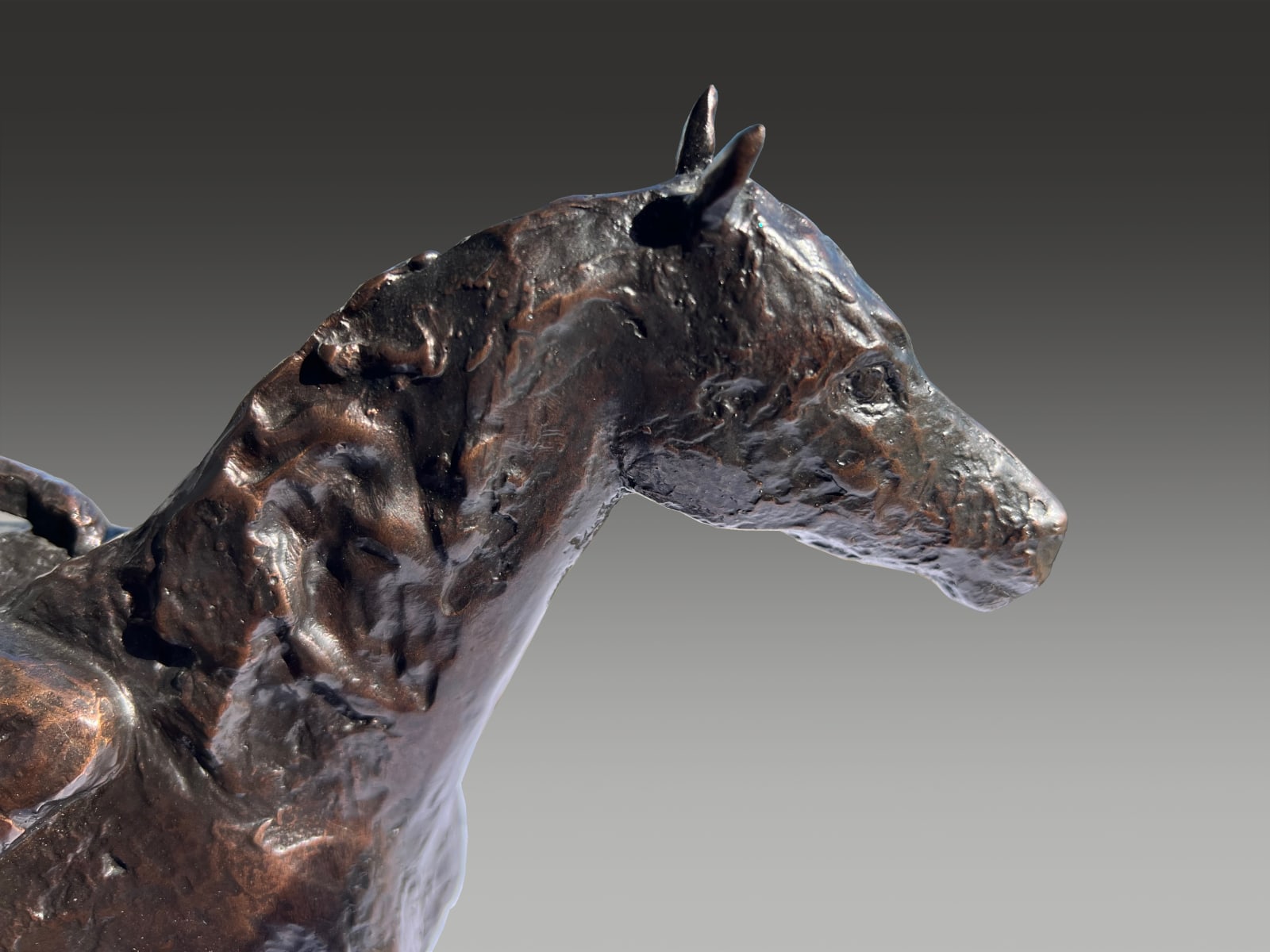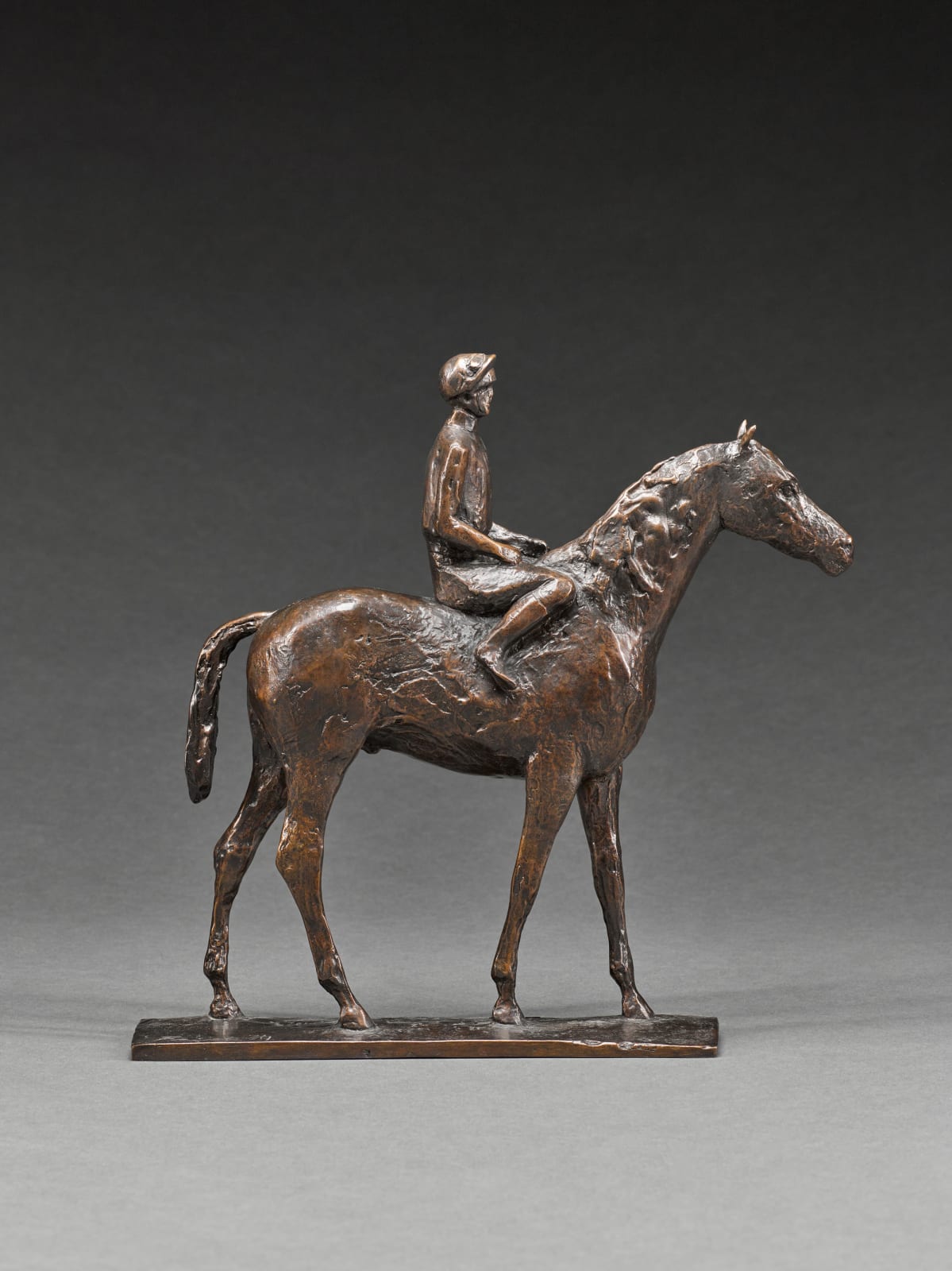Elisabeth Frink 1930-1993
Incised with the artist’s signature, ‘Frink’ and numbered 7/9.
Further images
Literature
Jill Wilder, Elisabeth Frink Sculpture Catalogue Raisonné, Harpvale Books, Salisbury, 984, p. 182, no. 211, illustrated (another cast).
Annette Ratuszniak, Elisabeth Frink, Catalogue Raisonné of Sculpture 1947-93, Lund Humphries
Frink was given her first pony aged 3 and was a competent rider by 4. Horse and Jockey reflects the artist's mastery in capturing the dynamic relationship between human and horse – a relationship that was central to the sculptor’s lifetime of work. Frink's interest in the horse as a subject grew from her admiration for its grace and vitality, but also its role as a symbol of humanity's relationship with nature. Horse and Jockey is not merely a representation of a jockey and horse, but a meditation on the symbiotic bond between man and horse.
Frink’s earlier work was something of a legacy of her childhood experience of WW2, anthropomorphic birds representing the aggression and vulnerability of man and his flying war machines. By the 1960s her psychological ‘war wounds’ were healing aided by a move to the brighter climes of southern France. Frink’s work softened becoming smoother and less textured; qualities we observe in Horse and Jockey.
With her sensitivity to the horrors of WW2 receding, Frink said she was aiming for ‘a sense of containment under the skin”. In many later sculptures she was concerned about man’s relationship with animals; in particular, with dogs and horses. “The world would be terrible place without animals”. Dogs and horses, Frink observed, have “ been man’s best friend for thousands of years.” This enduring relationship is wonderfully captured in Horse and Jockey and of course Horse and Rider, both conceived in 1974 and the latter described by Frink as a “an ageless symbol of man and horse" and now a listed ‘building’ on busy Bond Street in the centre of London’s Mayfair, and marking the entrance to the Royal Academy.
The sculptor’s mastery over bronze as a medium is on full display in Horse and Jockey, with her characteristic use of texture and bold contours. Frink modelled on an armature of metal rods and chicken wire in wet plaster of Paris. She worked fast; a necessity of her process as the plaster dried quickly. When dry she chiselled and reshaped the form, sometimes adding more plaster. This method of sculpting highlighted the tactile quality of the material inviting touch as well as visual appreciation.
The trophy cast of Horse and Jockey was presented to the winning owner of the King George VI and Queen Elizabeth Stakes at Ascot and was further embellished with a horse collar of diamonds. Another cast was offered by Bonhams in 2018. The Tate Gallery holds a lithograph of Horse and Jockey.












